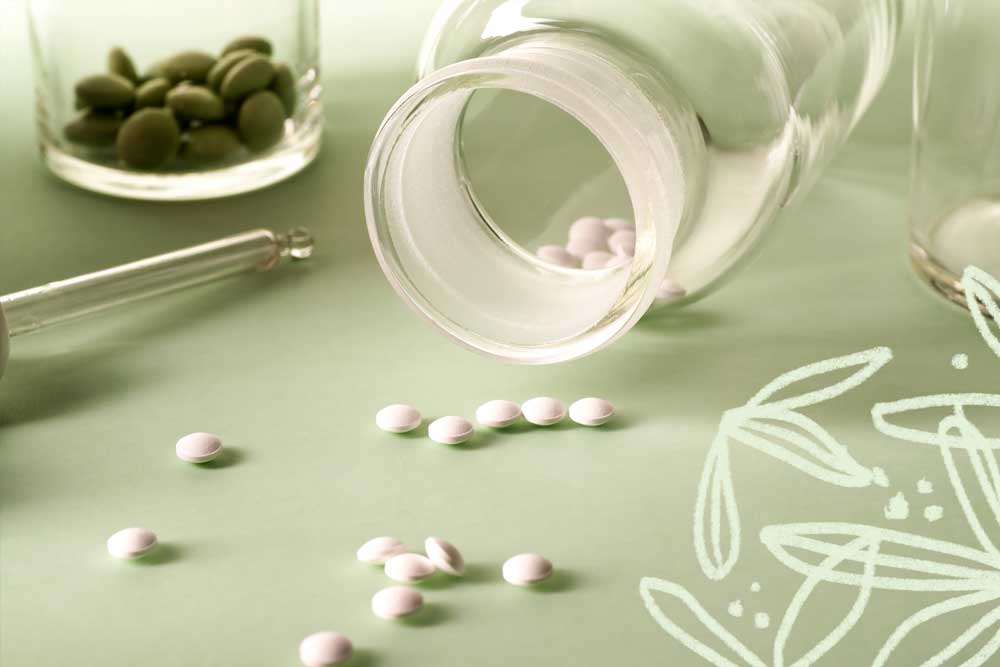Urinary tract infections (UTIs) are something most of us are all too familiar with, unfortunately. Menopause UTIs are inconvenient and painful. They can make going out and about a challenge when all you are doing is assessing where the nearest bathroom is. During menopause, UTIs can become more common and cause all sorts of grief.
Find what you need quickly
UTI definition
A UTI is usually a bacterial infection in your bladder but it can progress to the upper urinary tract (kidneys) which is a much more serious infection. They can show up with a multitude of symptoms. You are more susceptible to UTIs during menopause for several reasons.
Declining levels of estrogen contribute to:
- Thinning of vulvar, vaginal and urethral tissue. This makes it easier for bacteria to grow and easier for sex to push bacteria into your urethra and bladder
- Reduced vaginal flora variety. It is easier for bad bacteria to grow
How likely is a UTI during menopause
- Approximately 50 – 60% of women will develop a UTI in their lifetime. One study found that women between the ages of 55-59 had a 33% chance of developing a UTI during that five-year span
- You are more likely to have UTIs during menopause if you also have a chronic condition such as diabetes
- Having a urinary tract infection can also cause temporary urinary incontinence
Read more about the stages of menopause.
Menopause and UTI signs
UTI symptoms depend on which part of the urinary tract is infected.
Lower tract UTIs are the most common form and affect the urethra and bladder. Symptoms can include:
- Burning or pain when you pee
- Needing to pee suddenly and more often
- Not passing much urine when you pee
- Pelvic pain or pain in your lower abdomen
- Pee that looks bloody or cloudy
- Pee that has a stronger odor than what you’re used to
Upper tract UTIs mainly affect the kidneys. These are less common, but are more serious and can be potentially life-threatening. Symptoms can include:
- Pain and tenderness in your upper back and sides
- Chills
- Fever
- Nausea
- Vomiting
How to prevent UTIs during menopause
- Toilet hygiene – wipe yourself from the front to the back
- Go to the bathroom when you need to, and don’t hold your in your pee for a long time
- Pee after sex – this helps get rid of any bacteria
- Keep hydrated – this helps dilute and wash out bacteria more effectively
Tips for relief from UTIs
Make an appointment to see your healthcare provider or go to an urgent care center when you feel those tell-tale signs of a UTI – don’t wait! Ask for an urgent appointment if you notice blood in your pee.
Antibiotics
Symptoms that feel like a UTI are not always a urinary infection. Vaginitis and some skin conditions can cause the same symptoms. If your healthcare provider thinks you may have a UTI, they may suggest:
- A course of antibiotics
- If you meet the criteria for recurrent UTIs, then your healthcare provider may have you take antibiotics more regularly.
Research on reducing the frequency of UTIs in women with recurrent infections has not found that a single-dose antibiotic at specific times or a low daily dose works any better. If you are having frequent infections, ask to see a specialist, such as a urologist or urogynecologist.
D-mannose
A recent review found it is likely that D-mannose may help prevent UTIs if you have recurrent infections. Side effects and adverse events were low, so there doesn’t seem to be much downside to trying it, with the advice of your healthcare provider.
Cranberry products
Some studies have shown a benefit, while others didn’t. The Cleveland Clinic says that the “science is mixed” on whether or not cranberry-based products prevent UTIs.
Vaginal estrogen
Your healthcare provider can advise if this hormone treatment is suitable for you. You insert this as a cream into your vagina with an applicator.
Studies show that out of 100 women using this treatment over eight months, 45 women avoid getting a UTI because of this treatment, 15 people still get a UTI and 40 won’t get one but would not have done it anyway. Since the figures are from studies taken across different women at different times, it is not possible to say whether this treatment reduces UTIs.
Perimenopause and UTI FAQs
Why do UTIs happen more often during menopause?
Changes and an overall decrease in estrogen levels throughout the stages of menopause change the vulval tissue, making it more fragile, and also changes the balance of bacteria in your vulva which increases the risk of a UTI.
Your pelvic floor muscles may also weaken, which makes it harder to fully empty your bladder.
Some have other menopause symptoms, such as incontinence or vaginal discomfort.
Does a UTI affect your health?
Having a urinary tract infection can affect your quality of sleep and your enjoyment of sex. A urinary tract infection can increase the risks of having recurrent or chronic UTIs or kidney infections. They can affect your overall quality of life.
When should you see a healthcare provider?
If UTIs are causing you difficulties, talk to your healthcare provider.
The fear of going somewhere new where you do not know where the bathrooms are can be overwhelming
Learn more – the latest urinary tract infection and menopause research
- Al-Badr A, Al-Shaikh G. Recurrent Urinary Tract Infections Management in Women: A review. Sultan Qaboos Univ Med J. 2013;13(3):359-367. doi:10.12816/0003256
- Cleveland Clinic, UTIs
- Foxman B. Epidemiology of urinary tract infections: incidence, morbidity, and economic costs. Am J Med. 2002;113:5–11S.
- Gupta K, Hooton TM, Naber KG, Wullt B, Colgan R, Miller LG, et al. Infectious Diseases Society of America; European Society for Microbiology and Infectious Diseases. International clinical practice guidelines for the treatment of acute uncomplicated cystitis and pyelonephritis in women: A 2010 update by the Infectious Diseases Society of America and the European Society for Microbiology and Infectious Diseases. Clin Infect Dis. 2011;52:e103–20
- Healthline, UTIs in Adults: Everything You Need to Know
- Hu KK, Boyko EJ, Scholes D, et al. Risk Factors for Urinary Tract Infections in Postmenopausal Women. Arch Intern Med. 2004;164(9):989–993. doi:10.1001/archinte.164.9.989
- Lenger, S. M., Bradley, M. S., Thomas, D. A., Bertolet, M. H., Lowder, J. L., & Sutcliffe, S. (2020). D-mannose vs other agents for recurrent urinary tract infection prevention in adult women: A systematic review and meta-analysis. American Journal of Obstetrics and Gynecology, 223(2), 265.e1-265.e13. https://doi.org/10.1016/j.ajog.2020.05.048
- Mody L, Juthani-Mehta M. Urinary tract infections in older women: a clinical review. JAMA. 2014;311(8):844-854. doi:10.1001/jama.2014.303
- Raz R. Urinary tract infection in postmenopausal women. Korean J Urol. 2011;52(12):801-808. doi:10.4111/kju.2011.52.12.801
- Renard J, Ballarini S, Mascarenhas T, et al. Recurrent Lower Urinary Tract Infections Have a Detrimental Effect on Patient Quality of Life: a Prospective, Observational Study [published online ahead of print, 2014 Dec 18]. Infect Dis Ther. 2014;4(1):125-135. doi:10.1007/s40121-014-0054-6
- Scholes D, Hawn TR, Roberts PL, et al. Family history and risk of recurrent cystitis and pyelonephritis in women. J Urol. 2010;184(2):564–569.
- Shao IH, Wu CC, Hsu HS, et al. The effect of nocturia on sleep quality and daytime function in patients with lower urinary tract symptoms: a cross-sectional study. Clin Interv Aging. 2016;11:879-885. Published 2016 Jun 29. doi:10.2147/CIA.S104634
- Wagenlehner F, Wullt B, Ballarini S, Zingg D, Naber KG. Social and economic burden of recurrent urinary tract infections and quality of life: a patient web-based study (GESPRIT). Expert Rev Pharmacoecon Outcomes Res. 2018;18(1):107-117. doi:10.1080/14737167.2017.1359543





